At first glance, the Late Devonian Gogo Reef might have looked roughly similar to a modern reef: colorful, lively, with piles of calcified stationary organisms hosting all sorts of swimming and crawling creatures. But look a little closer, and the reef isn’t made of scleractinian corals, but instead composed mostly of sponges, mats of algae, and rugose and tabulate corals. There are sharks, but they’re relatively small and slow-moving. There are crustaceans, but no proper crabs or lobsters. Instead, there are sea scorpions (more closely related to spiders than crustaceans). There are no triggerfishes, angelfishes, or parrotfishes. Instead there are lungfishes, coelacanths, and lots of boxy fishes with armor on the front halves of their bodies. [Edit: all of this is true about Gogo, but Remigolepis wasn’t from there. It was from the Mandagery Formation, which differs in an important detail: it’s freshwater! -Halichoeres]
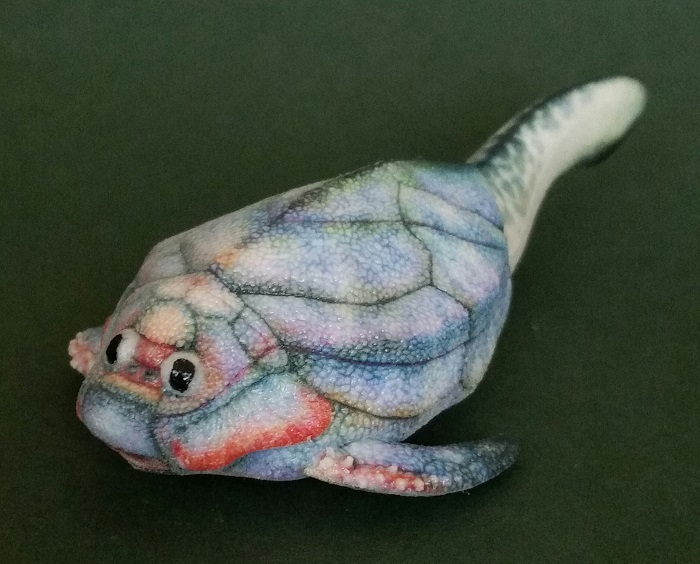
Today’s review concerns a model of one armored fish you might see on a Devonian reef [Edit: Nope, a Devonian river – Halichoeres], Remigolepis, a member of a group of primitive jawed fishes called antiarchs. These were mostly small fishes, with extensive head and thorax armor, as well as armored pectoral fins. Probably the most famous member of the group is Bothriolepis. Remigolepis differs from Bothriolepis and other antiarchs in several respects, but the most immediately obvious is the fact that the pectoral fin is short and does not contain a mobile joint. The short, solid fin inspired its name, which means “oar-scale.”
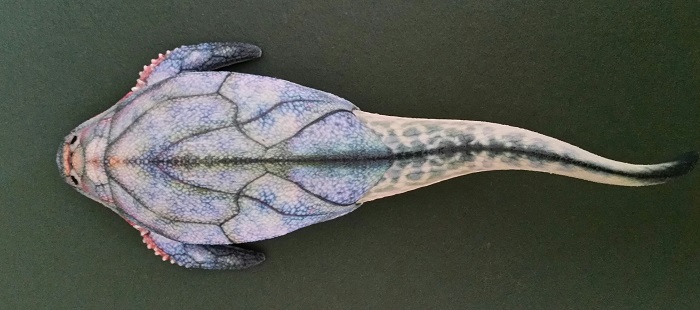
This model, from Australian designer Bruce Currie’s Paleozoo line, is 3D printed in a material called “sandstone,” which is actually gypsum powder treated with a binding agent. This material permits printing in full color, and the Paleozoo line takes full advantage of that feature. The figure is hollow, saving on material and shipping costs. The interior is a glossy black. This is a finely wrought display piece for adult collectors, and not an appropriate item for young children.
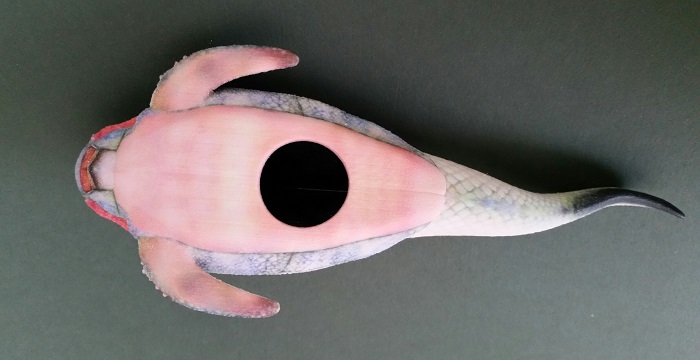
This is a nice rendition of Remigolepis, accurately depicting the vaulted box that may have resisted crushing in the jaws of large rhizodonts and arthrodires like Eastmanosteus. The topology of the plates is well-represented here. I might have placed some of the sutures slightly differently, but I think the arrangement here is well within the range of reasonable interpretation of the often somewhat crushed fossils.
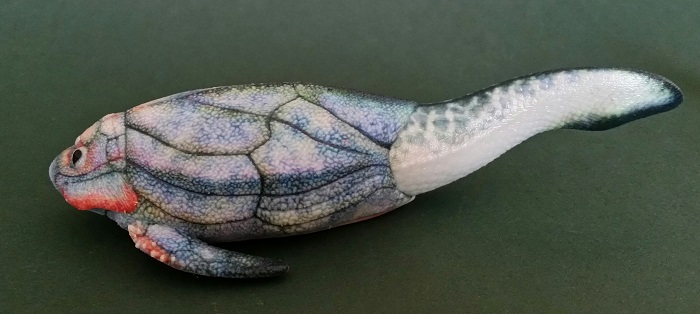
The eyes are in a little window up at the front. The small mouth is directed forward and downward (“subterminal” in ichthyology parlance), and the distinctive submarginal plates are picked out in a rosy color, perhaps suggesting a display role.
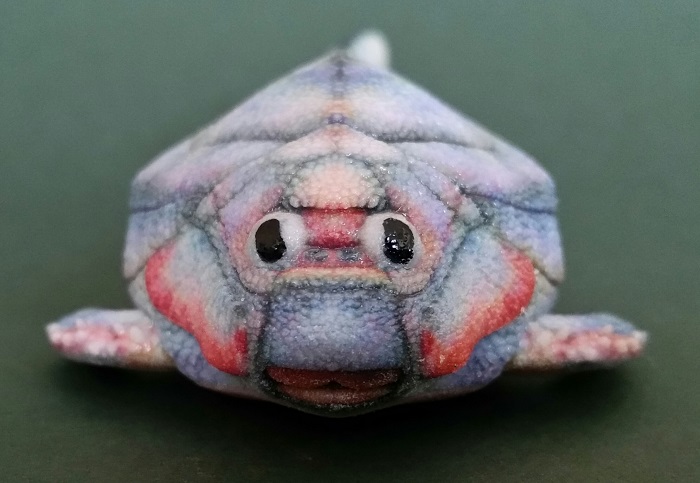
The overall color scheme is attractive, sort of a pearly lavender color, a bit darker at the plate margins, and livid highlights near the eyes, mouth, and on the leading edge of the pectoral fins. Unlike Bothriolepis, which was mostly naked behind the armor plates, this model features small scales on its tail. It also correctly lacks pelvic fins, a feature which arguably originated in another placoderm lineage. The tail tapers to a feckless point–these were probably not strong swimmers. Their anatomy is instead consistent with a bottom dweller, perhaps relying on retiring habits and its substantial armor for protection from predators.
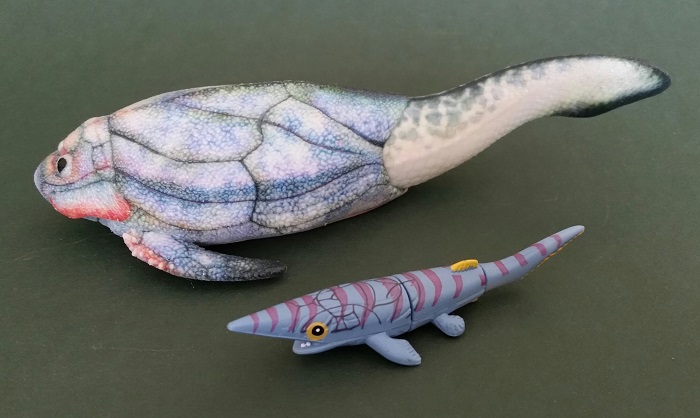
This model is about 16 cm long, or about 1/2 life size. It likely works well alongside the Bothriolepis from Paleozoo, though I don’t own that particular piece just yet. Scale-wise, it also works well with the much less realistic Yowie Rolfosteus. If I had one wish from the Paleozoo line, it would be for smaller, more affordable versions of some of these species. They are not exorbitant for what they are, especially considering that they come fully colored, but at a lower price point a person could build a great Gogo reef diorama in no time. That doesn’t stop me from wholeheartedly recommending this and other Paleozoo models, which you can buy either direct from Mr. Currie or from Shapeways (though I suspect that if you buy direct, a larger cut goes to the artist).
Disclaimer: links to Ebay and Amazon on the DinoToyBlog are affiliate links, so we make a small commission if you use them. Thanks for supporting us!




The colors are really breathtaking.
What, no Lego Homer?
Oh man, I can’t believe I forgot!
D’oh!